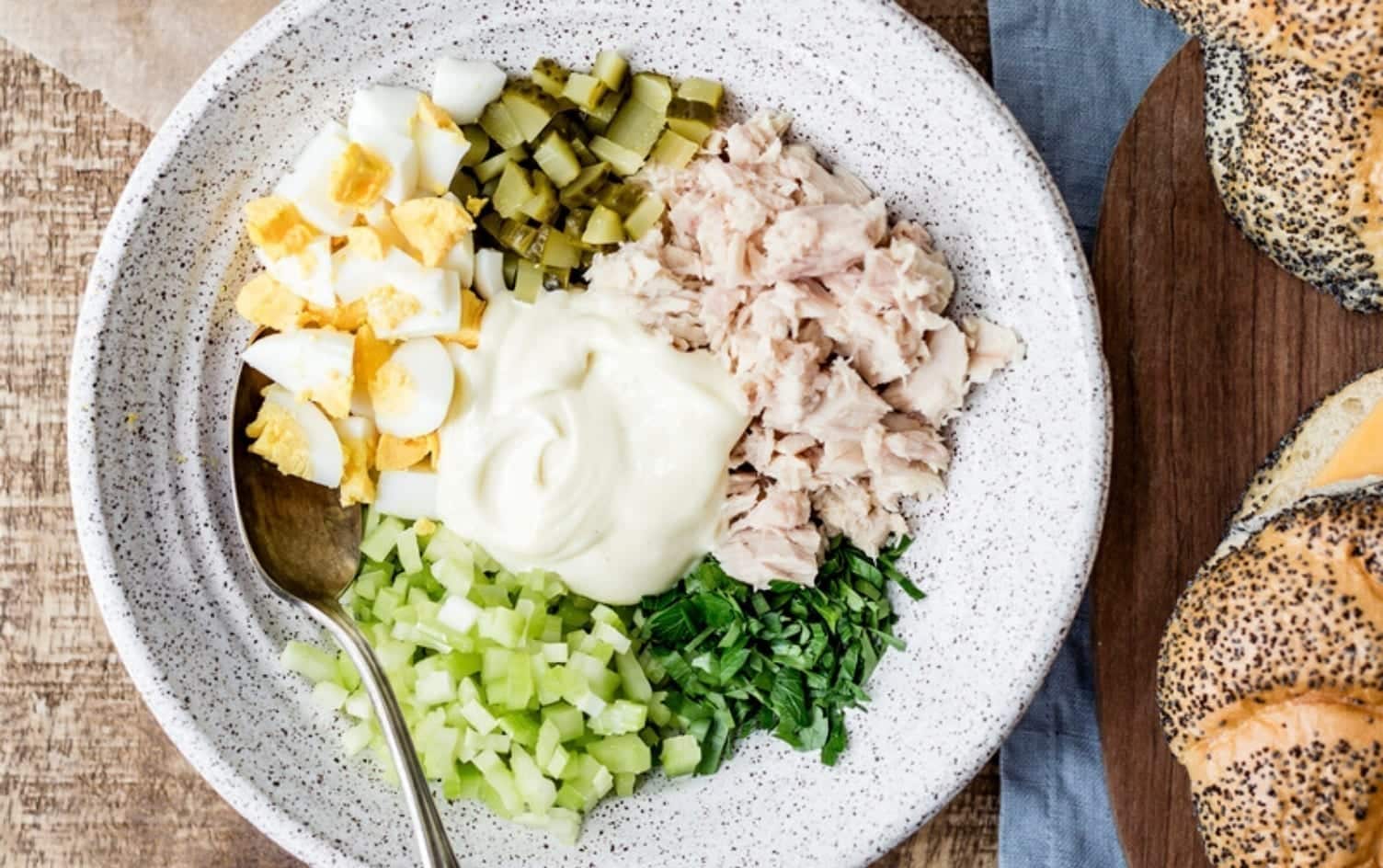Canned tuna is a convenient and budget-friendly protein source, and having a stash in your pantry can be helpful when you want something quick or forgot to meal prep. However, not all cans of tuna are created equal. Some are packed in water, others in oil. Some are more sustainable. And of course, the flavor profile can vary, too. If you’ve ever been confused by what to look for on a canned tuna label, here’s what you need to know:
THERE ARE TWO MAIN TYPES OF CANNED TUNA: ALBACORE AND SKIPJACK
Albacore, or white tuna, is low-fat and has a mild flavor. Skipjack, on the other hand, is higher in fat and has a fishier flavor. While albacore is more popular, it has nearly three times more mercury compared to skipjack, according to the Environmental Defense Fund (EDF). This isn’t really a concern for adults who eat canned tuna only a few times a month, but anyone who eats it regularly is better off choosing skipjack.
WILD-CAUGHT AND FARMED TUNA ARE NUTRITIONALLY SIMILAR, BUT WILD-CAUGHT IS MORE SUSTAINABLE
Wild-caught tuna is caught in its natural habitat, whereas farm-raised tuna is raised and caught in a controlled environment, like a tank. According to research, there’s not a black-and-white answer as to which is healthier. Farmed tuna tends to be higher in heart-healthy omega-3’s because it’s fed fortified food, whereas wild tuna tends to be lower in saturated fat. However, wild-caught tuna is more sustainable for the planet. This is because smaller fish need to be wild-caught to feed the farmed tuna, so overfishing still happens and is usually more damaging.
IF POSSIBLE, OPT FOR POLE-CAUGHT AND FAD-FREE
Simply put, pole-catching tuna means using a single fishing pole to hook a single fish. It’s the most ocean-friendly option because it’s the least invasive. Many large fishing companies use fish aggregating devices (FADs) to attract all kinds of fish to a boat, then use nets to pull all of these species out of the water. This is disruptive to the ecosystem, especially because any non-tuna generally won’t make it back into the ocean unharmed. While pole-catching takes more time and effort, it’s significantly less harmful to the environment.
OIL- AND WATER-PACKED CAN BOTH BE GOOD OPTIONS, DEPENDING ON YOUR NEEDS
Water-packed tuna means the tuna is stored in water, so it’s a lower fat, lower calorie option. A 1/2-cup (75g) serving of tuna in water contains 66 calories and less than 1 gram of fat. Water-packed tuna tends to be drier if you eat it on its own, which is why it can be a good option if you’re planning to dress your tuna with heart-healthy olive oil or protein-rich Greek yogurt.
A 1/2-cup (75g) serving of oil-packed tuna contains 145 calories and 6 grams of fat. The oil helps lock in the flavor so you get a heartier taste and more moist fish compared to water-packed tuna. It’s a good idea to look for olive-oil packed tuna rather than soybean or vegetable oil, since it’s higher in heart-healthy monounsaturated fats. It’s a good option for salads — just be mindful of extra dressing — or eating on its own as a snack with whole-wheat crackers.
In both cases, if you’re watching your sodium intake, make sure to look for “no-salt added” or “low-sodium” options.
THE BOTTOM LINE
If you’re concerned about sustainability, opt for pole-caught tuna. While albacore (white tuna) has slightly higher mercury levels than skipjack (chunk light tuna), it also has a milder, less fishy flavor many people prefer, so just be mindful about how often you consume canned tuna. Finally, when it comes to olive oil-packed or water-packed, both can be healthy choices, provided you keep sodium content in mind.
Check out Healthy Pantry Recipes for easy-to-cook recipes using non-perishable foods with helpful substitutions.




